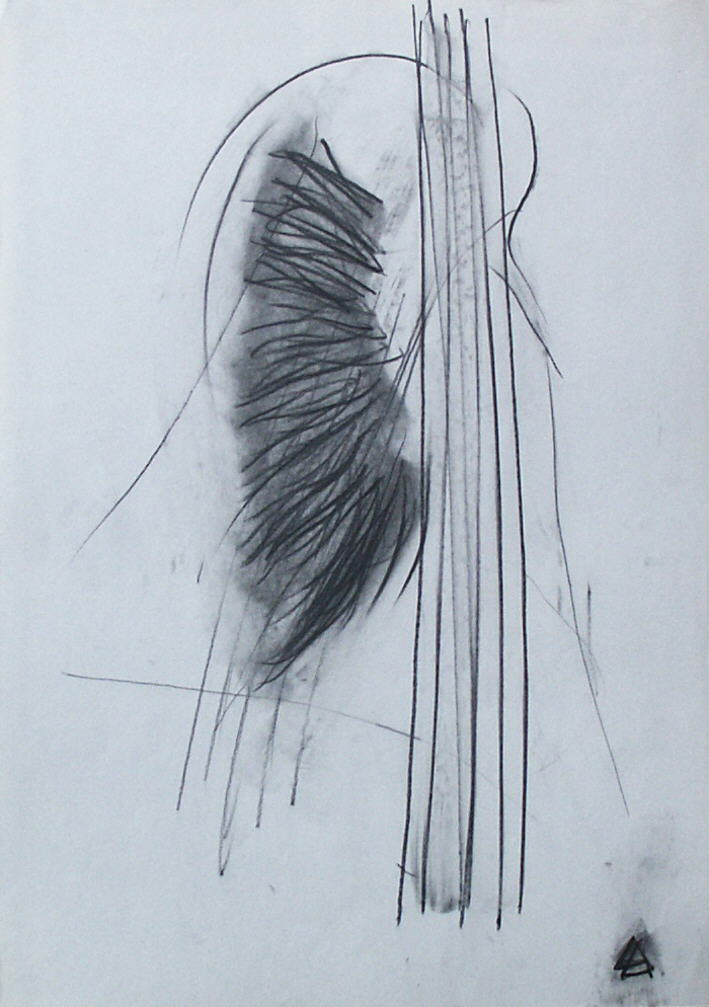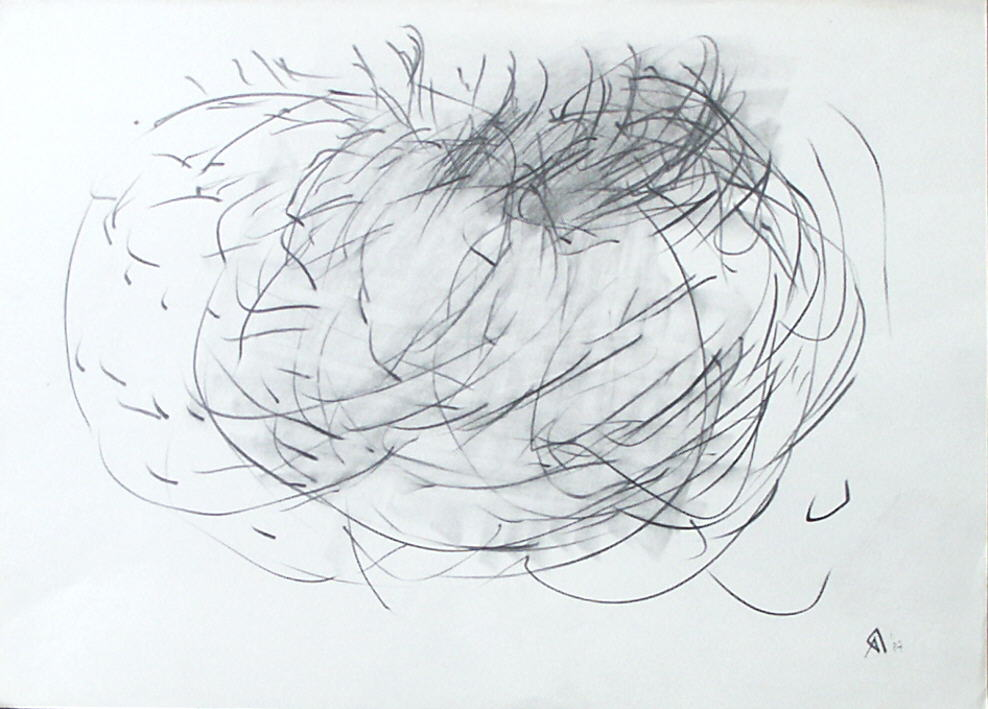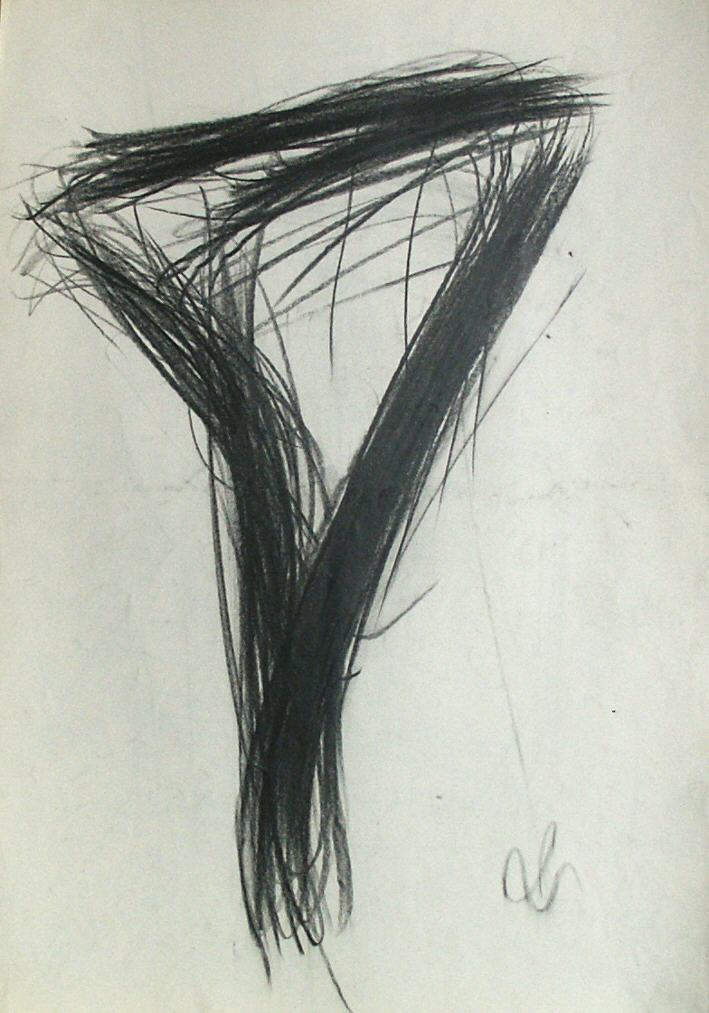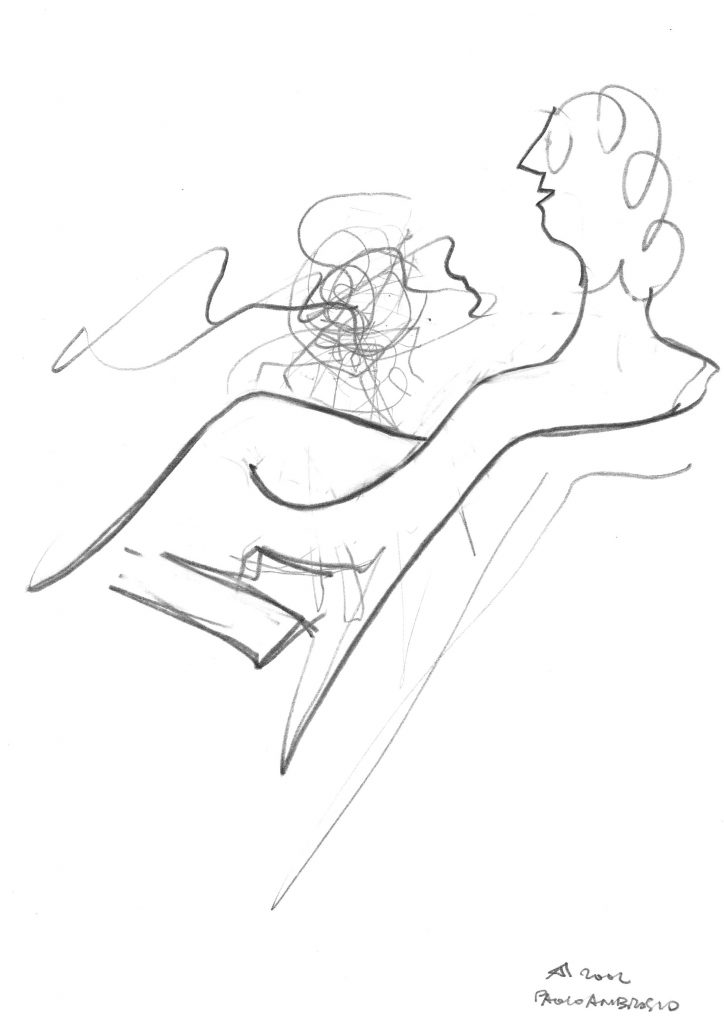Speech to Critics, Poets, Amateurs, Passers-by
Ambrosio Paolo ottobre 1979 (Prima parte)
Discorso ai Critici, ai Poeti, agli Amatorio, ai Passanti
Speech to Critics, Poets, Amateurs, Passers-by
Un enunciato estetico ha un senso se, almeno in linea di principio, è possibile riferirlo ad una produzione estetica: è in ogni caso una riflessione sul mondo dell’arte data dall’empiria e dalla storia e non ha il senso di un decreto ma quello di un’esperienza che a posteriori ha preso forma di teoria.
An aesthetic statement makes sense if, at least in principle, it is possible to refer it to an aesthetic production: it is in any case a reflection on the world of art given by empiricism and history and it does not have the meaning of a decree but that of an experience that a posteriori took the form of theory.
Max Bense, Estetica, Milano 1974, p. 295

Ambrosio Paolo, Disegno 0265, 1981 matita su carta cm. 50×35
Il senso di un’opera (o di un testo) non può farsi da solo ; l’autore non può produrre che delle presunzioni di senso, delle forme se si vuole, ed è il mondo a riempirle.
The meaning of a work (or a text) cannot be done alone; the author can only produce presumptions of meaning, of forms if one wishes, and the world fills them.
Roland Barthes, Saggi critici, Torino 1966, p. 13

Ambrosio Paolo, Esprit de finesse, 1987, disegno su carta, cm. 35×50
E’ per noi motivo di sorpresa sempre rinnovata la triplice distinzione che i bambini riescono a fare ciò che scarabocchiano, ciò che disegnano e quella specie di lettera che “scrivono” e di cui vanno particolarmente fieri. In essi vi è l’effetto di una magia con la possibilità di allineare certi segni, di collegarli tra loro e sono pienamente consapevoli di voler “dire” e comunicare qualcosa con questi segni. Per poco non li vediamo mettere il foglio all’orecchio così come i negri di Albert Schweizer di fronte a uno scritto.
The triple distinction that children manage to do what they scribble, what they draw and that kind of letter they “write” and of which they are particularly proud, is a reason of ever-renewed surprise. In them there is the effect of a magic with the possibility of aligning certain signs, of connecting them with each other and they are fully aware of wanting to “say” and communicate something with these signs. We almost see them put the paper to their ears as well as Albert Schweizer’s negroes in front of a writing.
Marthe Bernson, Dallo scarabocchio al disegno, Roma 1968, p. 28.
Ambrosio Paolo, senza titolo, disegno su carta,1987, cm. 35×50
Certamente, solo se si è imparato a parlare si puo’ dire qualcosa . dunque chi vuole dir qualcosa, deve avere imparato a padroneggiare una lingua e tuttavia è chiaro che si puo’ voler parlare senza dover parlare. Cosi’ come si puo’ voler danzare senza danzare. E, riflettendoci, la mente afferra “L’immagine” del danzare, del parlare, e cosi’ via.
Of course, only if you have learned to speak can you say something. therefore whoever wants to say something must have learned to master a language and yet it is clear that one can want to speak without having to speak. So how can you want to dance without dancing. And, upon reflection, the mind grasps the “Image” of dancing, of speaking, and so on.
Ludwig Wittgenstein, Ricerche filologiche, Torino 1967, p.144
Se penso col linguaggio, davani alla mia mente non passano, oltre le espressioni linguistiche, anche i “significati”; ma lo stesso linguaggio è il veicolo del pensiero.
If I think with language, in front of my mind, beyond linguistic expressions, “meanings” do not pass; but language itself is the vehicle of thought
4. Immagina una scrittura in cui le lettere vengano utilizzate per designare suoni, ma anche per designare l’accentuazione, e come segni d’interpunzione. Ora immagina che qualcuno intenda quella scrittura come se ad ogni lettera corrispondesse semplicemente un suono e le lettere non avessero anche altre funzioni, del tutto diverse.
4. Imagine a script in which letters are used to designate sounds, but also to designate accentuation, and as punctuation marks. Now imagine that someone understands that writing as if each letter simply corresponded to a sound and the letters did not also have other functions, entirely different
Ludwig Wittgestein, Ricerche filologiche, Torino, 1967, p.141, p.11.

Ambrosio Paolo, Disegno, 1977, matita su carta cm. 50×25
Nel processo artistico l’autentica innovazione consiste nell’estrarre cio’ di cui non si puo’ fare a meno. In altri termini il correlato oggettivo del progresso estetico del processo estetico consiste nella constatazione sistematica e nella realizzazione in senso progressista di cio’ che vi è di effettivamente inevitabile nel processo estetico; questo inevitabile è la vera, l’autentica realtà estetica. La realtà estetica ha pero’ come abbiamo detto una natura stocastica, una natura statistica; la sua realtà è una approssimazione; la probabilità del suo stato è un’assenza: l’inevitabile.In the artistic process, the authentic innovation consists in extracting what one cannot do without. In other words, the objective correlation of the aesthetic progress of the aesthetic process consists in the systematic observation and realization in a progressive sense of what is actually inevitable in the aesthetic process; this inevitable is the true, the authentic aesthetic reality. However, as we have said, aesthetic reality has a stochastic nature, a statistical nature; its reality is an approximation; the probability of his state is an absence: the inevitable.
M Bense. Estetica p. 320
Ambrosio Paolo, Disegno, 1978, matita su carta cm.50×25
Il processo di apprendimento (e di percezione) è principalmente una questione di scoperta della risposta adeguata a una situazione problematica e di fissazione della relazione soddisfacente situazione-risposta.
The learning process (and perception) is mainly a matter of discovering the appropriate response to a problematic situation and establishing the satisfactory situation-response relationship.
Hildgard Bower, Teorie dell’apprendimento, Milano 1978, p.439

Ambrosio Paolo, Disegno, 1978, matita su carta cm. 50×25
La funzione dell’astrazione consiste nel tradurre con metodo e in modo percettibile – e questo è decisivo- gli oggetti in segni, nell’annullare cioè il tetto nel rosso del tetto e il mare nel blu del mare. Il processo estetico si attua come sottile dialettica tra oggetto e segno e il residuo degli oggetti che viene presentato dalla realizzazione non è più un residuo della percezione ma della coscienza.
The function of abstraction consists in translating in a methodical and perceptible way – and this is decisive – objects into signs, that is, in canceling the roof in the red of the roof and the sea in the blue of the sea. The aesthetic process takes place as a subtle dialectic between object and sign and the residue of the objects that is presented by the realization is no longer a residue of perception but of consciousness.
M. Bense, Estetica, p. 352
La parola letteraria si sviluppa a partire da se stessa, formando una rete di cui ogni punto distinto dagli altri, lontano anche dai più vicini, è situato in rapporto a tutti in uno spazio che al tempo stesso li colloca e li separa.
The literary word develops from itself, forming a network of which each point distinct from the others, even away from the closest, is located in relation to all in a space that at the same time places and separates them.
Michail Foucault, Saggi letterari, Milano 1971, p.113
Ambrosio Paolo, Disegno, 1978, matita su carta cm. 50×25




